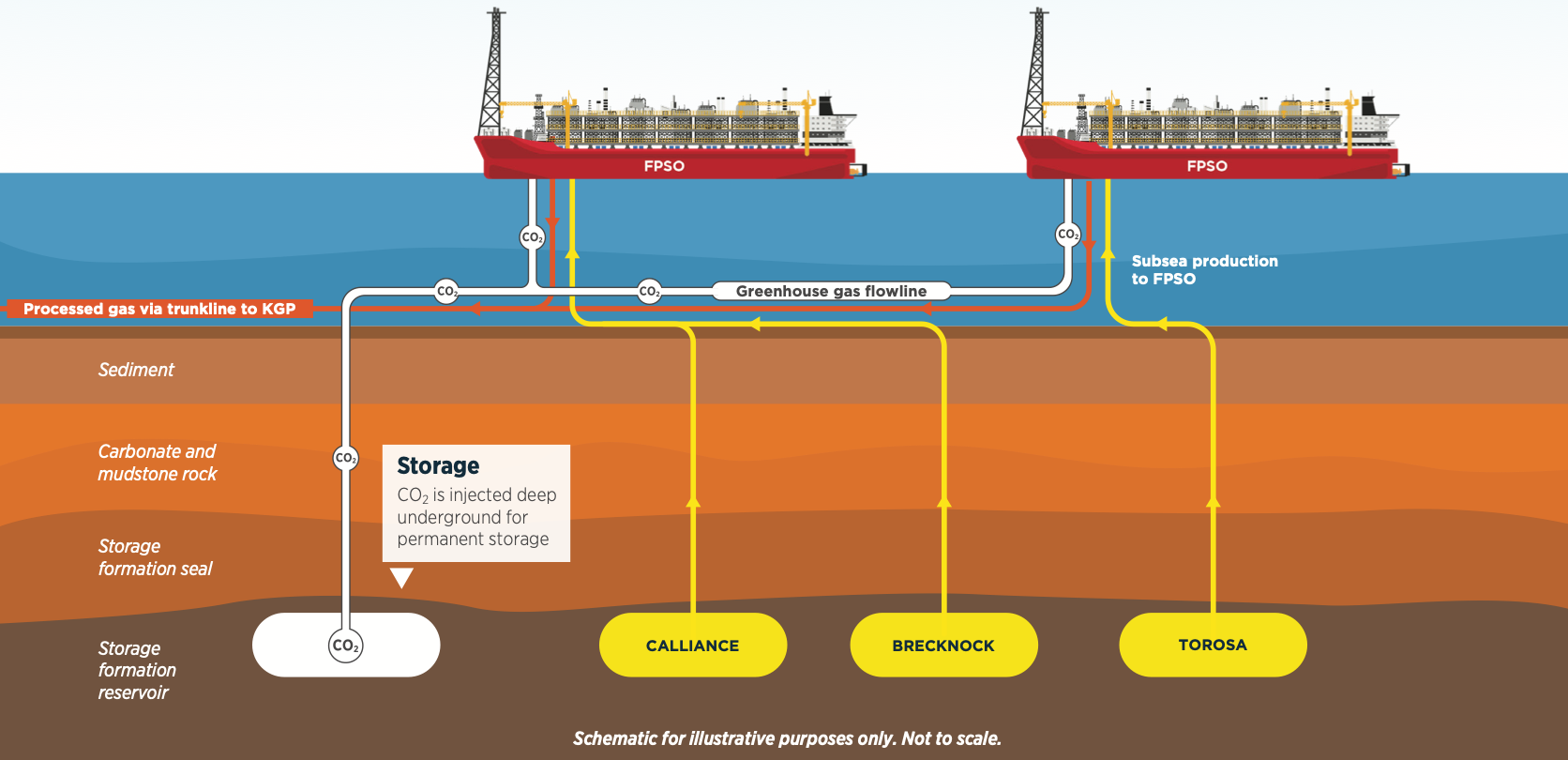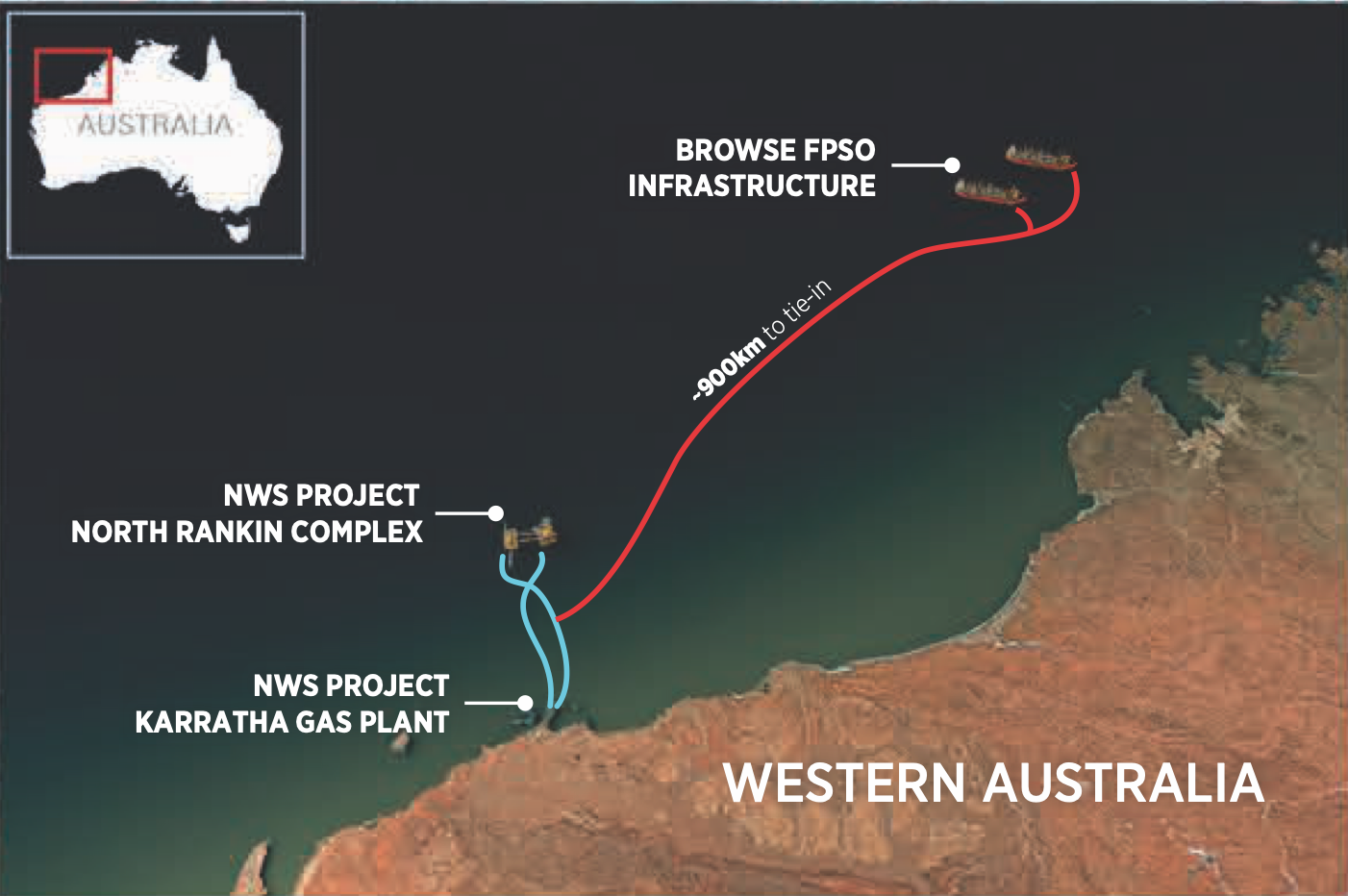Gas seeping to surface from Chevron's Barrow Island oil operation
The WA environment regulator is investigating unknown amounts of hydrocarbons rising to the surface on the Class A nature reserve.
Carbon storage has gone from "high-risk" to the preferred option at the controversial gas export mega-project.

Woodside has reversed its attitude to carbon storage and lodged the final major environmental approval in its 50-year quest to develop the remote CO2-rich Browse gas fields off the Kimberley coast.
Australia's largest oil and gas company wants to inject millions of tonnes of carbon dioxide produced with the gas back under the seabed to significantly reduce the direct climate pollution from its planned $30 billion-plus development.
Woodside regarded underground carbon storage as "presently being a high risk, high cost" option to manage the up to 12 per cent CO2 in the Browse reservoirs in a July 2022 submission to the federal government, but said it would continue to assess it.
Less than a year later, Woodside wanted to expedite federal approval for carbon storage by amending its 2018 environmental approval for gas production at Browse. However, the regulatory shortcut was rejected as carbon storage made the proposal "fundamentally different."
“Successful carbon capture and storage programs in offshore environments are complex to execute because the technology is in its infancy,” the federal environment department told Woodside in August 2023.

The regulator's concerns included leaking CO2, making the water more acidic, and noise from regular seismic testing to measure the spread of CO2 under the seabed affecting endangered whales.
Instead, Woodside lodged a separate approval for carbon storage in October 2024, which was released on January 2, with the public having two weeks to lodge comments.
WA Greens fossil fuels spokeswoman Sophie McNeill said the target of reducing greenhouse gas emissions by 53 million tonnes of CO2 over the project's life was only about three per cent of the total climate pollution from Browse when indirect, or Scope 3, emissions from customers using the gas was included.
“Now they are suddenly trying to ram this through in a matter of weeks during the summer holidays," she said, calling for an extended period for public comment.
"WA already hosts one of the world's biggest carbon dumping failures, Chevron's Gorgon gas export project and the last thing our climate can afford is another sham CCS project."
Carbon dioxide injection at Gorgon is running at less than one-third of its design capacity after almost eight years of gas exports.
Woodside told the federal regulator that, after several years of work, it had determined that storing CO2 under the Calliance gas field was a suitable solution. The federal government backed this up by declaring it an identified greenhouse gas storage formation in June 2024.
A Woodside spokesman said carbon capture and storage is a mature technology that can play a key role in meeting the world’s emissions reduction requirements.
"The Browse Joint Venture has determined that a CCS solution for the Browse to NWS Project is feasible," he said.
He said the consultation period was a matter for the department.
Woodside plans to capture at least 85 per cent of the CO2 in Browse gas fields at two floating production vessels and pipe it up to 130km to where it will drill up to six wells to inject the carbon dioxide four kilometres below sea level.
It chose the drilling area to minimise the risk of the injected CO2 mixing the gas in the Calliance reservoir, a scenario that could eventually increase the CO2 level beyond what the processing facility could handle and force a cut in production.
Five-yearly seismic surveys will determine how far the CO2 plume is spreading underground. An average of three to four million tonnes of CO2 will be injected annually.
Without carbon storage, Woodside and its Browse partners would have to purchase carbon offsets for all reservoir CO2 vented to the atmosphere after recent changes to the federal government's safeguard mechanism that allows other emissions to be gradually reduced to net zero by 2050.
Woodside estimates that carbon storage will reduce direct (Scope 1) emissions from the production and processing of Browse gas for export by 31 per cent, or 63 million tonnes, over the project's three-decade life.
Woodside chief executive Meg O'Neill has consistently laid out three requirements before she commits to the expensive front end engineering design (FEED) required to allow Browse to be fully costed and approved for investment.
One was landing on a way to manage the high levels of CO2 in the reservoir, which has now been done.
O'Neill also wanted to significantly progress negotiations for the North West Shelf (NWS) joint venture to process Browse gas at its plant near Karratha. The industry widely understood the problem to be the two companies invested in the NWS but not Browse: Chevron and Shell.

Woodside removed Chevron from the picture in December by swapping its share of the Wheatstone LNG project for Chevron's long-standing one-sixth stake in the NWS. However, Shell remains and will be negotiating for a deal that maximises the value and minimises the risk for the NWS.
The third hurdle was to make real headway towards obtaining all the required regulatory approvals. WA government approval in December for the NWS plant to operate until 2070 was a significant milestone.
A report on Thursday that Woodside is gearing up to award a front-end engineering design contract for the Browse floating production vessels indicates growing confidence, but the gas major still has a challenge in securing all approvals.
The December WA approval for the NWS kicked off a six-week countdown for Federal Environment Minister Tanya Plibersek to make a decision six years after Woodside started the process. The next day, her department extended the deadline to 28 February.
Unlike the wide-ranging WA assessment, Plibersek will only consider the effect on the one million ancient rock art images in the adjacent Murujuga National Park as it is a National Heritage Place.
If Plibersek needs additional information, she could request more time. This move could put her decision into the caretaker period before the coming federal election, further delaying an outcome.
Separately, the minister is also considering an investigation into the rock art under Aboriginal heritage legislation that commenced more than two years ago. A draft report leaked to the media in April 2024 concluded that there was “not sufficient evidence to support the claim the specified area is under threat from industrial emissions and chemical discharge”.
The Browse offshore development also needs an outcome from the WA process that started six years ago and then federal approval.
A year ago, WA's Environmental Protection Authority told Woodside its preliminary view was that Browse was unacceptable due to concerns about whales, turtles and oil spills.
When the EPA publishes its recommendation for Browse, which is planned for 2025, there will certainly be appeals to be considered before the WA environment minister can decide. The appeals process took 18 months for the NWS life extension. After the state process is completed, the federal environment minister will decide on Browse.
Unlike the gas development, Browse carbon storage does not need state approval as it is located entirely in Commonwealth waters.
Woodside operates and has a 31 per cent stake Browse. BP owns 44 per cent, Japan Australia LNG 14 per cent and PetroChina 11 per cent.
All the info and a bit of comment on WA energy and climate every Friday